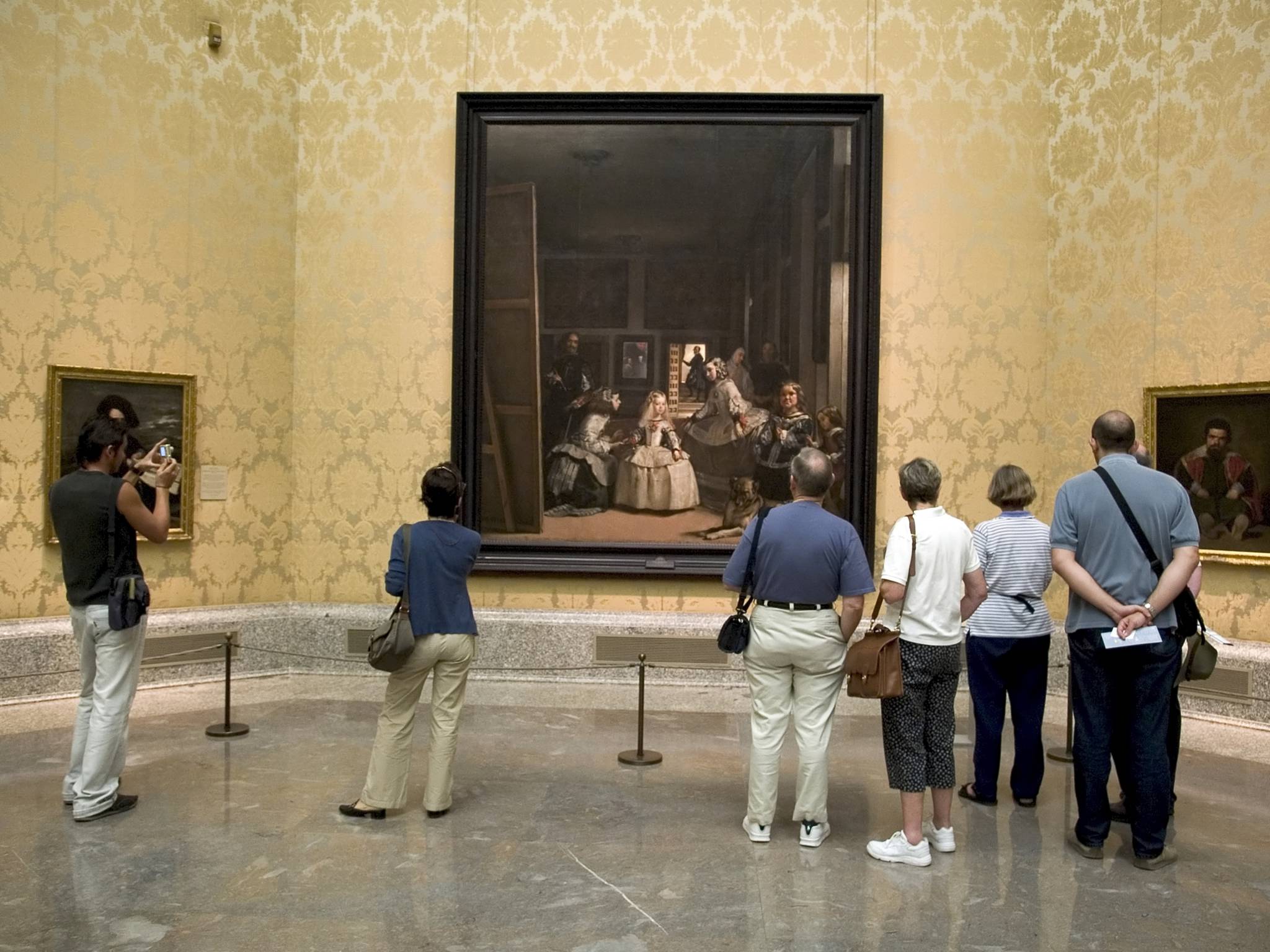There are various reasons to visit the National Gallery of Art in Washington, its collection of paintings, prints, photos, sculpture, and decorative arts traces the development of Western Art from the Middle Ages up to the present. This includes the only painting by Leonardo da Vinci in the Americas and the largest mobile created by Alexander Calder. Download the National Gallery of Art in Washington Travel Guide and Offline Map.
1. Ginevra de’ Benci
The portrait of Ginevra de’ Benci is the only Leonardo da Vinci painting on public display not just in the District, but in all the Americas. The late 15th-century oil is more austere than da Vinci’s best-known portrait, made about 25 years later. There’s no hint of a smile on the face of this young woman, probably 16 and newly engaged when she posed.
2. Electronic Superhighway
Approach the tiny screen that represents the District in “Electronic Superhighway,” and you’ll see yourself live on closed-circuit TV. That’s one of many playful touches in Nam June Paik’s 40-foot-wide assemblage, which represents the United States in images fed from 50 DVD players to 335 television sets, plus that D.C. one. The screens show sweeping landscapes, iconic products and clips from Hollywood movies, all hurtling by as if glimpsed from a car racing at the speed limit.
3. Adams Memorial
There are works by Augustus Saint-Gaudens in the Smithsonian and the National Gallery of Art (the plaster version of his famous memorial to Robert Gould Shaw), but one of the most evocative of his statues isn’t in a museum, but rather in Rock Creek Cemetery. Commissioned by the great American writer Henry Adams, the Adams Memorial is a haunting, shrouded figure, set alone in a peaceful copse, a powerful memorial to Adams’s wife, who died by her own hand in 1885.
Learn more about other destinations that offer unique experiences by checking out eTips.
















